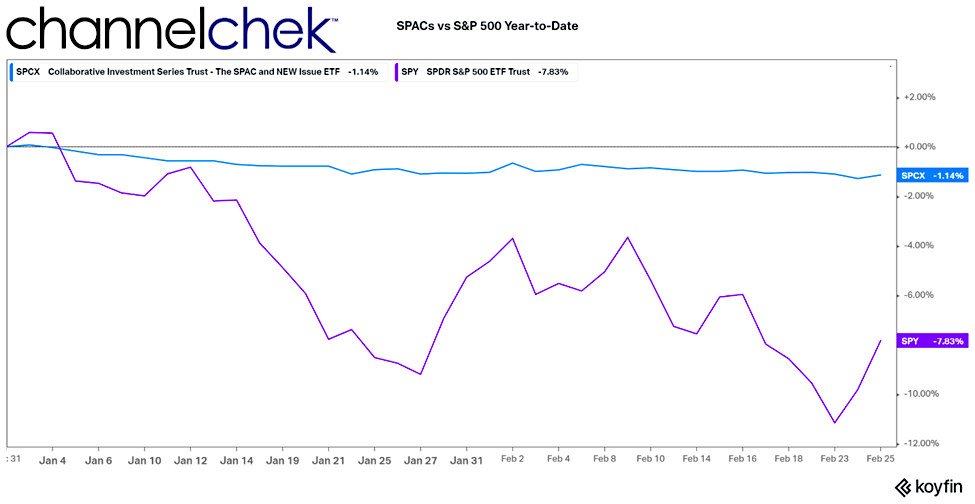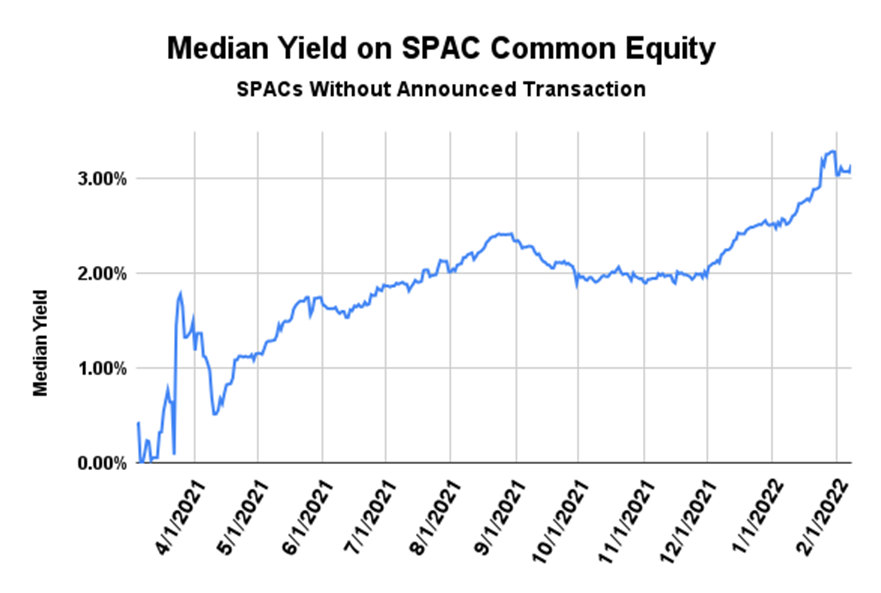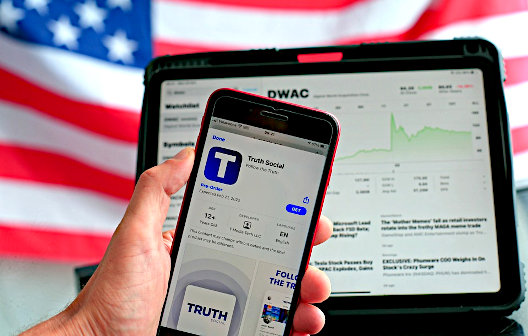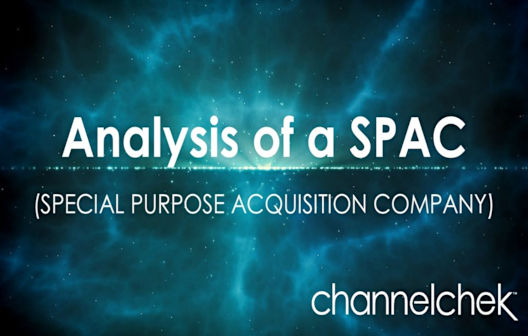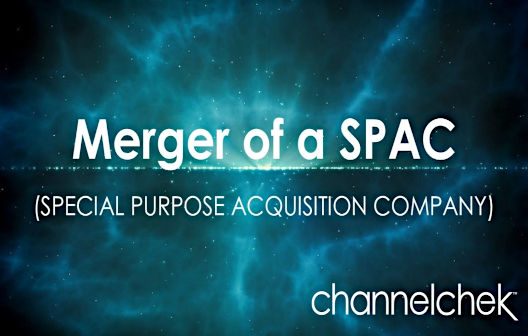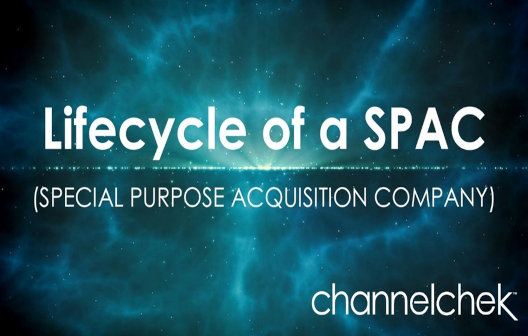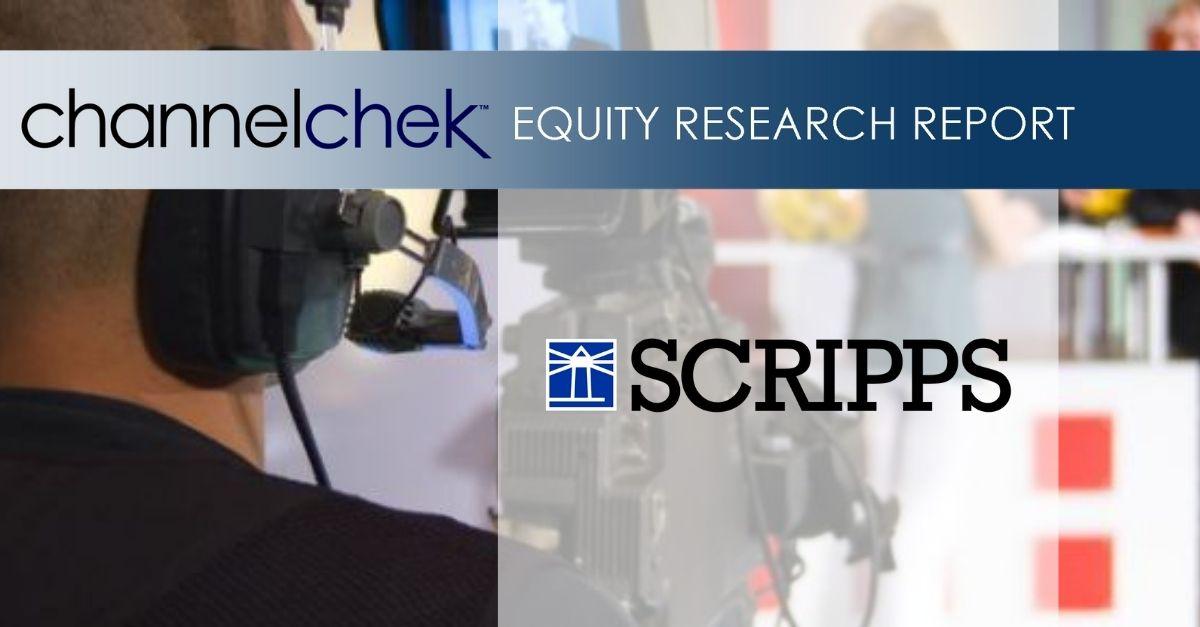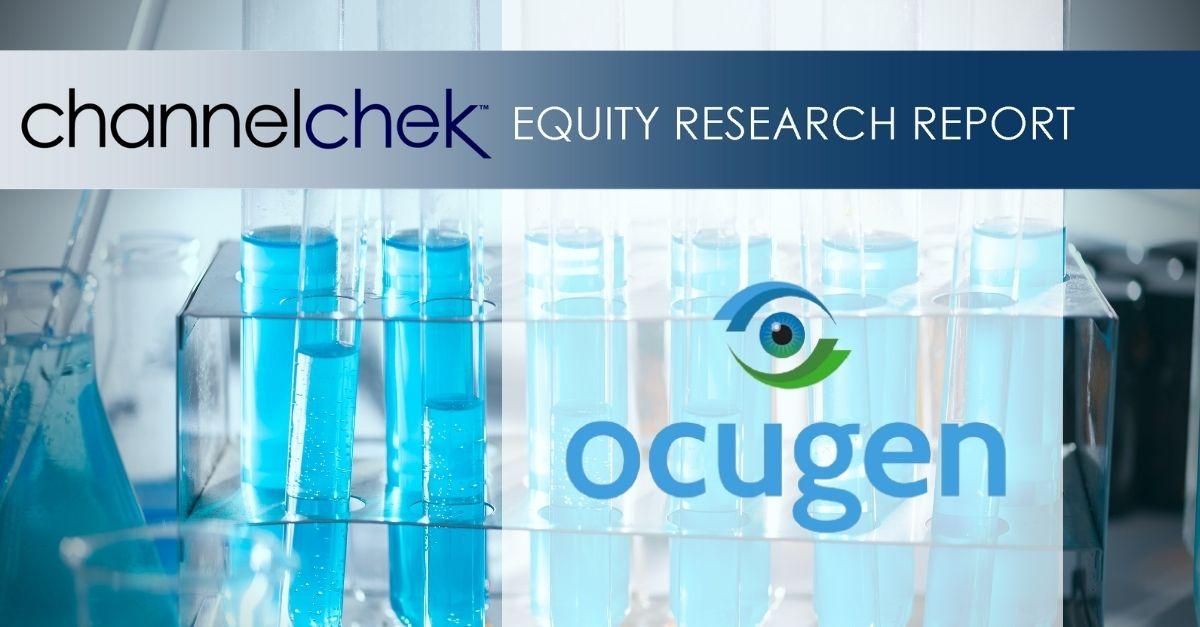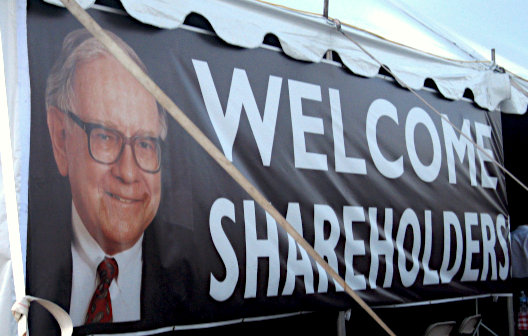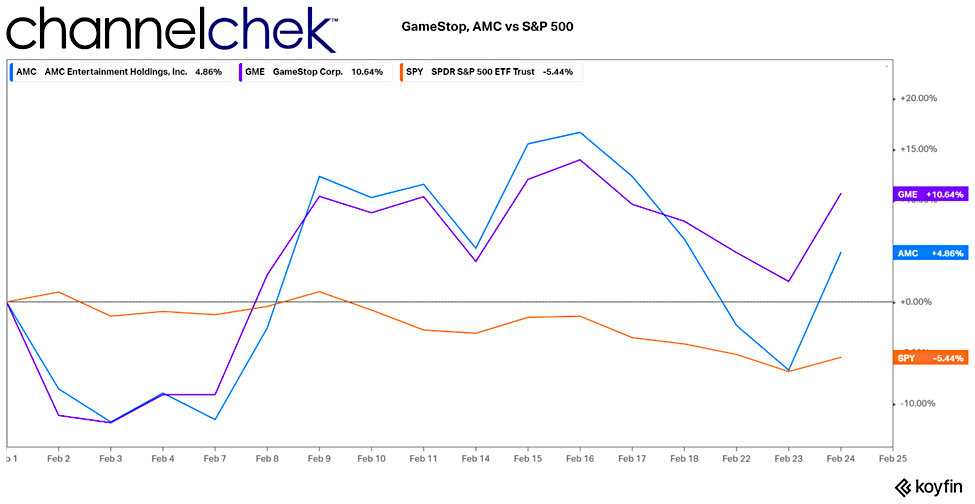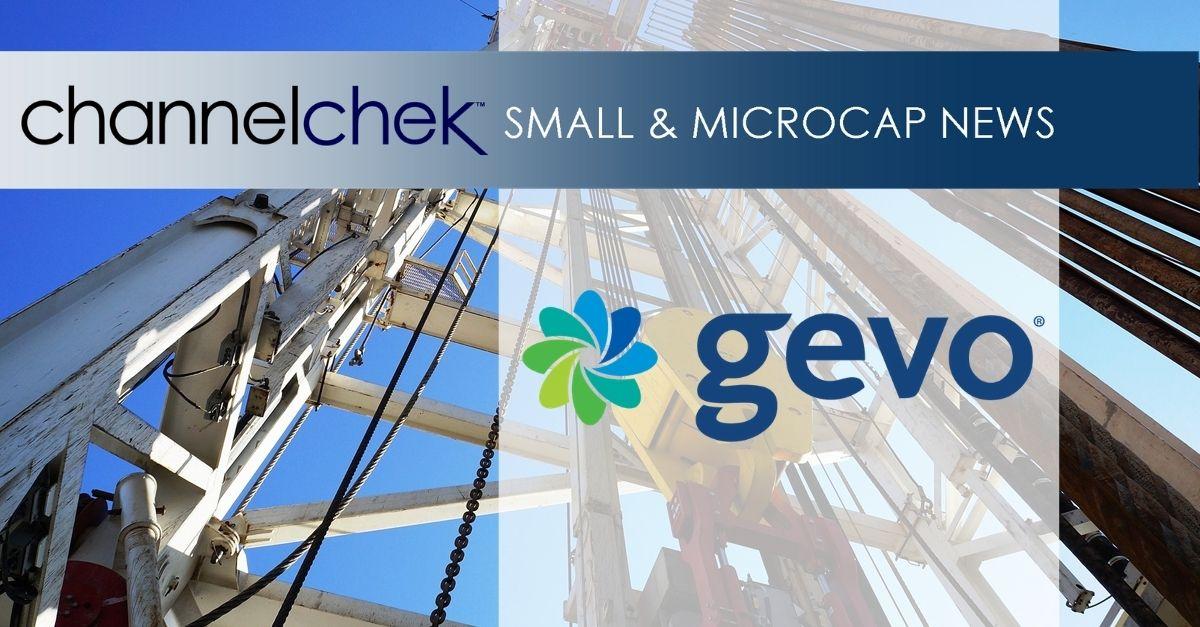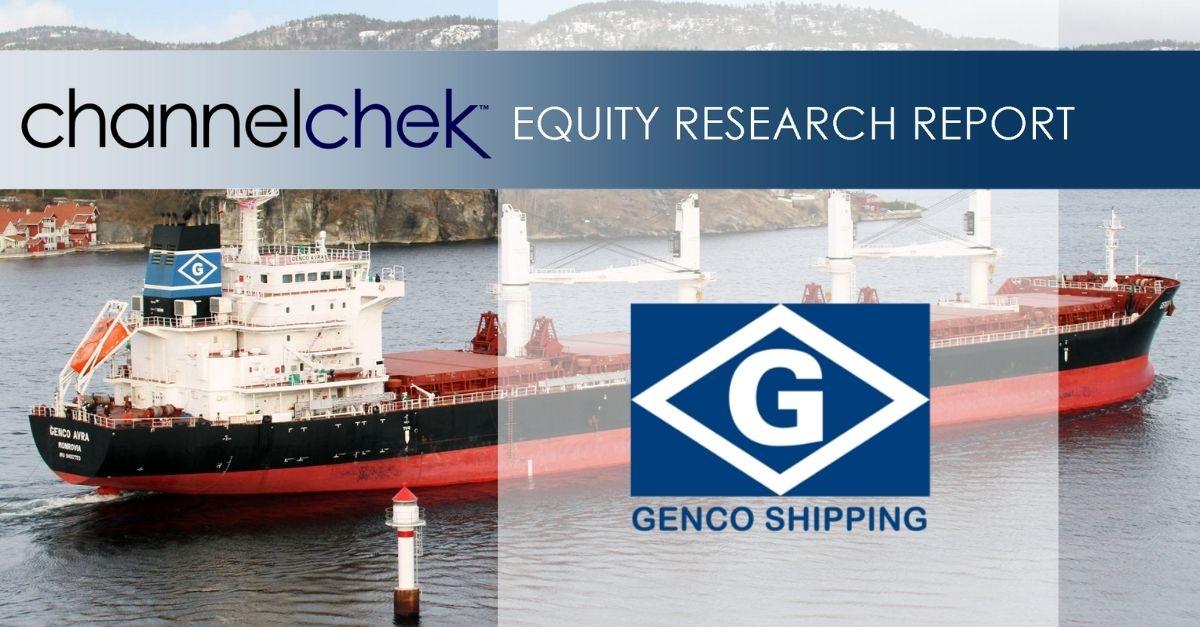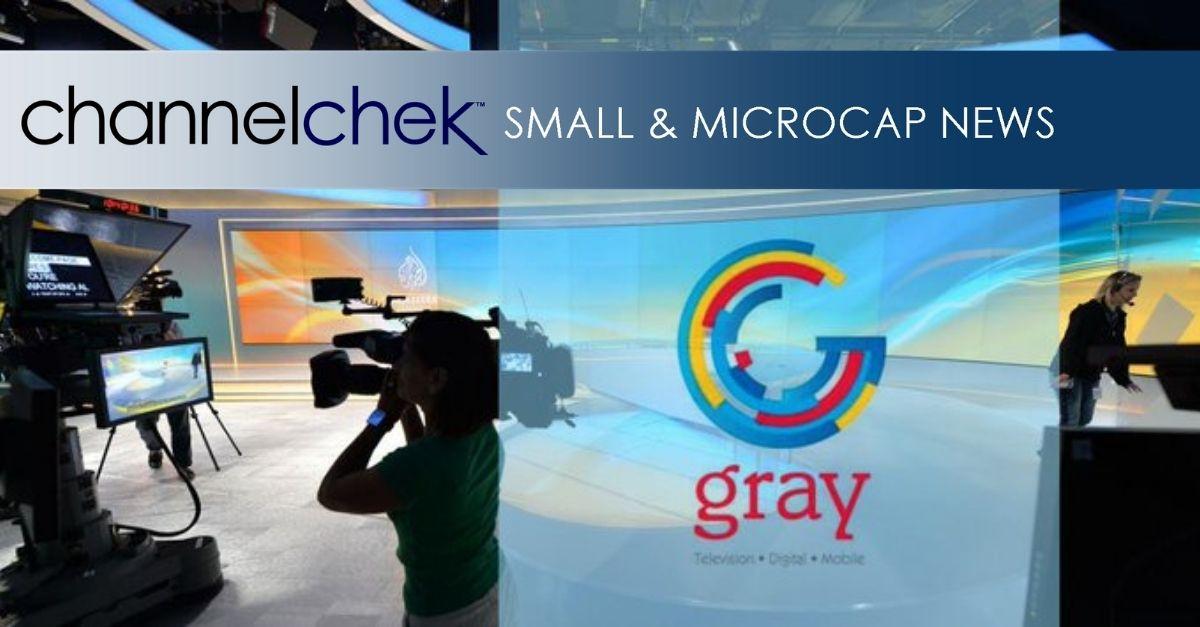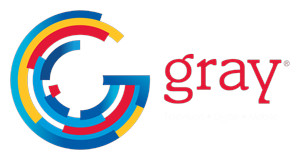
Gray Reports Solid 2021 Performance and is Poised for a Strong 2022
Research, News, and Market Data on Gray Television
ATLANTA, Feb. 25, 2022 (GLOBE NEWSWIRE) — Gray Television, Inc. (“Gray,” “we,” “us” or “our”) (NYSE: GTN) today announced financial results for the fourth quarter ended December 31, 2021. While the quarter did not include political advertising revenue at the robust levels experienced in the fourth quarter of 2020, our total revenues of $721 million were strong for an off-year of the two-year political advertising cycle, and higher than our anticipated results due to continued improvement in economic conditions and our acquisition of the Local Media Group of Meredith Corporation on December 1, 2021, and Quincy Media on August 2, 2021. Most notably, in the fourth quarter 2021 our combined local and national broadcast advertising revenue, excluding political advertising revenue (“Total Core Revenue”) increased by 26%, and our retransmission consent revenue increased by 35%. Our total revenue for the year ended December 31, 2021 was $2.4 billion, the highest we have ever reported.
Due to the significant effect that material transactions have had on our results of our operations, we present the financial information herein consistent with both U.S. Generally Accepted Accounting Principles (“GAAP” or “As Reported Basis”) and on a Combined Historical Basis (“CHB”), which incorporates certain historical results of acquired businesses, less the historical results of divested businesses. We also furnish certain other detailed non-GAAP metrics to provide more meaningful period-over-period comparisons to assist the public in its analysis and valuation of the Company. This additional information includes a summary of incremental expenses that were specific to our acquisitions, divestitures, and related financing activities (“Transaction Related Expenses”), non-cash stock-based compensation expenses and certain non-GAAP terms common in our industry. Please refer to the detailed discussion of the foregoing terms and concepts included elsewhere herein.
Summary of Operating Results
As Reported Basis (the respective 2021 periods reflect the “off-year” of the two year political advertising cycle):
For the fourth quarter of 2021:
-
Total revenue was $721 million, a decrease of 9% from the fourth quarter of 2020, primarily due to the cyclical decline in political advertising revenue.
-
Net income attributable to common stockholders was $16 million, or $0.17 per fully diluted share, a decrease of 92% from the fourth quarter of 2020. Excluding Transaction Related Expenses and non-cash stock compensation totaling $59 million, our net income attributable to common stockholders would have been $60 million.
-
Broadcast Cash Flow was $258 million, a decrease of 39% from the fourth quarter of 2020.
-
Adjusted EBITDA was $224 million, a decrease of 45% from the fourth quarter of 2020.
For the full year 2021:
-
Revenue was $2.4 billion, an increase of 1% from 2020, marking our highest ever annual revenue.
-
Net income attributable to common stockholders was $38 million, a decrease of 89% from 2020. Excluding Transaction Related Expenses and non-cash stock compensation totaling $95 million, our net income attributable to common stockholders would have been $109 million.
-
Broadcast Cash Flow was $813 million, a decrease of 19% from 2020.
-
Adjusted EBITDA was $739 million, a decrease of 21% from 2020.
Combined Historical Basis (the respective 2021 periods reflect the “off-year” of the two year political advertising cycle):
For the fourth quarter of 2021:
-
Revenue was $857 million, a decrease of 24% from the fourth quarter of 2020. Total Core Revenue increased by 11% from the fourth quarter of 2020.
-
Broadcast Cash Flow was $311 million, a decrease of 50% from the fourth quarter of 2020.
For the full year 2021:
-
Revenue was $3.2 billion, a decrease of 6% from 2020. Total Core Revenue increased by 18% from 2020.
-
Broadcast Cash Flow was $1.1 billion, a decrease of 24% from 2020.
Other Key Metrics
-
As of December 31, 2021, our Total Leverage Ratio, Net of all Cash, was 5.47 times on a trailing eight-quarter basis, netting our total cash balance of $189 million and giving effect to all Transaction Related Expenses.
-
During the fourth quarter of 2021, we repurchased 1,501,088 shares of our common stock at an average price of $19.98 per share, including commissions, for a total cost of approximately $30 million. We have not repurchased any shares since the close of the fourth quarter. Currently, we have 87,742,758 common shares and 7,560,937 Class A common shares outstanding and $174 million remaining under our share repurchase authorization.
-
Throughout 2021 and 2020, we incurred Transaction Related Expenses on an As Reported Basis that included but were not limited to legal and professional fees, severance and incentive compensation and contract termination fees. In addition, we recorded certain non-cash stock-based compensation expenses. These expenses are summarized as follows (in millions):
|
Three Months Ended
|
|
Year Ended
|
|
December 31,
|
|
December 31,
|
|
2021
|
|
2020
|
|
2021
|
|
2020
|
|
Transaction Related Expenses:
|
|
|
|
|
|
|
|
|
Broadcasting
|
$
|
3
|
|
$
|
–
|
|
$
|
3
|
|
$
|
–
|
|
Corporate and administrative
|
52
|
|
1
|
|
71
|
|
1
|
|
Miscellaneous expense
|
–
|
|
–
|
|
7
|
|
–
|
|
Total Transaction Related Expenses
|
$
|
55
|
|
$
|
1
|
|
$
|
81
|
|
$
|
1
|
|
|
|
|
|
|
|
|
|
Total non-cash stock-based compensation
|
$
|
4
|
|
$
|
4
|
|
$
|
14
|
|
$
|
16
|
Taxes
-
During 2021 and 2020, we made aggregate federal and state income tax payments (net of refunds) of $149 million and $70 million, respectively. During 2022, we anticipate making income tax payments (net of refunds) within a range of $170 million to $190 million.
-
As of December 31, 2021, we have $10 million of federal operating loss carryforwards, which we expect to utilize in 2022. In addition, we have an aggregate of $424 million of various state operating loss carryforwards, of which we expect that approximately half will be utilized.
Guidance for the Three-Months Ending March 31, 2022
Based on our current forecasts for the quarter ending March 31, 2022, we anticipate the following key financial results, as outlined below in approximate ranges. We present revenue net of agency commissions. We present operating expenses net of depreciation, amortization and gain/loss on disposal of assets.
-
Revenue:
-
Local revenue of $270 to $275 million, and national revenue of $81 to $86 million.
-
Retransmission revenue of $380 to $385 million.
-
Political revenue of $20 to $25 million.
-
Production company revenue of $20 to $22 million.
-
Total revenue of $789 to $812 million.
-
Operating Expenses:
-
Broadcasting expenses of $535 to $545 million, including retransmission expense of approximately $225 million and transaction related expenses of approximately $3 million and non-cash stock-based compensation expense of approximately $1 million.
-
Production company expenses of approximately $25 million.
-
Corporate expenses of $29 to $33 million, including transaction related expenses of approximately $1 million and non-cash stock-based compensation expense of approximately $4 million.
Selected Operating Data on As Reported Basis (Unaudited)
|
Three Months Ended December 31,
|
|
2021
|
|
2020
|
|
% Change
2021 to
2020
|
|
2019
|
|
% Change
2021 to
2019
|
|
(dollars in millions)
|
|
Revenue (less agency commissions):
|
|
|
|
|
|
|
|
|
|
|
Broadcasting
|
$
|
692
|
|
$
|
763
|
|
(9
|
)%
|
|
$
|
554
|
|
25
|
%
|
|
Production companies
|
|
29
|
|
|
29
|
|
0
|
%
|
|
|
25
|
|
16
|
%
|
|
Total revenue
|
$
|
721
|
|
$
|
792
|
|
(9
|
)%
|
|
$
|
579
|
|
25
|
%
|
|
|
|
|
|
|
|
|
|
|
|
Political advertising revenue
|
$
|
20
|
|
$
|
245
|
|
(92
|
)%
|
|
$
|
38
|
|
(47
|
)%
|
|
|
|
|
|
|
|
|
|
|
|
Operating expenses (1):
|
|
|
|
|
|
|
|
|
|
|
Broadcasting
|
$
|
449
|
|
$
|
355
|
|
26
|
%
|
|
$
|
339
|
|
32
|
%
|
|
Production companies
|
$
|
23
|
|
$
|
20
|
|
15
|
%
|
|
$
|
17
|
|
35
|
%
|
|
Corporate and administrative
|
$
|
84
|
|
$
|
18
|
|
367
|
%
|
|
$
|
21
|
|
300
|
%
|
|
|
|
|
|
|
|
|
|
|
|
Net income
|
$
|
29
|
|
$
|
224
|
|
(87
|
)%
|
|
$
|
94
|
|
(69
|
)%
|
|
|
|
|
|
|
|
|
|
|
|
Non-GAAP Cash Flow (2):
|
|
|
|
|
|
|
|
|
|
|
Broadcast Cash Flow
|
$
|
258
|
|
$
|
424
|
|
(39
|
)%
|
|
$
|
229
|
|
13
|
%
|
|
Broadcast Cash Flow Less Cash Corporate Expenses
|
$
|
177
|
|
$
|
409
|
|
(57
|
)%
|
|
$
|
212
|
|
(17
|
)%
|
|
Free Cash Flow
|
$
|
59
|
|
$
|
300
|
|
(80
|
)%
|
|
$
|
108
|
|
(45
|
)%
|
|
|
|
|
|
|
|
|
|
|
|
|
|
|
|
|
|
|
|
|
|
Year Ended December 31,
|
|
2021
|
|
2020
|
|
% Change
2021 to
2020
|
|
2019
|
|
% Change
2021 to
2019
|
|
(dollars in millions)
|
|
Revenue (less agency commissions):
|
|
|
|
|
|
|
|
|
|
|
Broadcasting
|
$
|
2,340
|
|
$
|
2,320
|
|
1
|
%
|
|
$
|
2,035
|
|
15
|
%
|
|
Production companies
|
|
73
|
|
|
61
|
|
20
|
%
|
|
|
87
|
|
(16
|
)%
|
|
Total revenue
|
$
|
2,413
|
|
$
|
2,381
|
|
1
|
%
|
|
$
|
2,122
|
|
14
|
%
|
|
|
|
|
|
|
|
|
|
|
|
Political advertising revenue
|
$
|
44
|
|
$
|
430
|
|
(90
|
)%
|
|
$
|
68
|
|
(35
|
)%
|
|
|
|
|
|
|
|
|
|
|
|
Operating expenses (1):
|
|
|
|
|
|
|
|
|
|
|
Broadcasting
|
$
|
1,548
|
|
$
|
1,340
|
|
16
|
%
|
|
$
|
1,325
|
|
17
|
%
|
|
Production companies
|
$
|
62
|
|
$
|
52
|
|
19
|
%
|
|
$
|
74
|
|
(16
|
)%
|
|
Corporate and administrative
|
$
|
159
|
|
$
|
65
|
|
145
|
%
|
|
$
|
104
|
|
53
|
%
|
|
|
|
|
|
|
|
|
|
|
|
Net income
|
$
|
90
|
|
$
|
410
|
|
(78
|
)%
|
|
$
|
179
|
|
(50
|
)%
|
|
|
|
|
|
|
|
|
|
|
|
Non-GAAP Cash Flow (2):
|
|
|
|
|
|
|
|
|
|
|
Broadcast Cash Flow
|
$
|
813
|
|
$
|
999
|
|
(19
|
)%
|
|
$
|
729
|
|
12
|
%
|
|
Broadcast Cash Flow Less Cash Corporate Expenses
|
$
|
666
|
|
$
|
945
|
|
(30
|
)%
|
|
$
|
636
|
|
5
|
%
|
|
Free Cash Flow
|
$
|
238
|
|
$
|
559
|
|
(57
|
)%
|
|
$
|
273
|
|
(13
|
)%
|
(1) Excludes depreciation, amortization and gain on disposal of assets, net.
(2) See definition of non-GAAP terms and a reconciliation of the non-GAAP amounts to net income included herein.
Selected Operating Data for the Fourth Quarter of 2021 on As Reported Basis
(Unaudited)
|
|
Three Months Ended December 31,
|
|
|
|
2021
|
|
|
|
2020
|
|
|
Amount
|
|
Percent
|
|
|
|
|
Percent
|
|
|
|
Percent
|
|
Increase
|
|
Increase
|
|
|
Amount
|
|
of Total
|
|
Amount
|
|
of Total
|
|
(Decrease)
|
|
(Decrease)
|
|
|
(dollars in millions)
|
|
Revenue (less agency commissions):
|
|
|
|
|
|
|
|
|
|
|
|
|
|
Local (including internet/digital/mobile)
|
|
$
|
277
|
|
38
|
%
|
|
$
|
222
|
|
28
|
%
|
|
$
|
55
|
|
|
25
|
%
|
|
National
|
|
|
82
|
|
11
|
%
|
|
|
62
|
|
8
|
%
|
|
|
20
|
|
|
32
|
%
|
|
Political
|
|
|
20
|
|
3
|
%
|
|
|
245
|
|
31
|
%
|
|
|
(225
|
)
|
|
(92
|
)%
|
|
Retransmission consent
|
|
|
294
|
|
41
|
%
|
|
|
217
|
|
27
|
%
|
|
|
77
|
|
|
35
|
%
|
|
Production companies
|
|
|
29
|
|
4
|
%
|
|
|
29
|
|
4
|
%
|
|
|
–
|
|
|
0
|
%
|
|
Other
|
|
|
19
|
|
3
|
%
|
|
|
17
|
|
2
|
%
|
|
|
2
|
|
|
12
|
%
|
|
Total
|
|
$
|
721
|
|
100
|
%
|
|
$
|
792
|
|
100
|
%
|
|
$
|
(71
|
)
|
|
(9
|
)%
|
|
|
|
|
|
|
|
|
|
|
|
|
|
|
Total local and national revenue
|
|
|
|
|
|
|
|
|
|
|
|
|
|
combined (“Total Core Revenue”)
|
|
$
|
359
|
|
50
|
%
|
|
$
|
284
|
|
36
|
%
|
|
$
|
75
|
|
|
26
|
%
|
|
Operating Expenses (before
|
|
|
|
|
|
|
|
|
|
|
|
|
|
|
|
|
|
depreciation, amortization and
|
|
|
|
|
|
|
|
|
|
|
|
|
|
|
|
|
|
gain on disposal of assets, net):
|
|
|
|
|
|
|
|
|
|
|
|
|
|
|
|
|
|
Broadcasting:
|
|
|
|
|
|
|
|
|
|
|
|
|
|
|
|
|
|
Station expenses
|
|
$
|
274
|
|
61
|
%
|
|
$
|
230
|
|
65
|
%
|
|
$
|
44
|
|
|
19
|
%
|
|
Retransmission expense
|
|
171
|
|
38
|
%
|
|
125
|
|
35
|
%
|
|
46
|
|
|
37
|
%
|
|
Transaction Related Expenses
|
|
3
|
|
1
|
%
|
|
–
|
|
0
|
%
|
|
3
|
|
|
|
|
|
Non-cash stock-based compensation
|
|
1
|
|
0
|
%
|
|
–
|
|
0
|
%
|
|
1
|
|
|
|
|
|
Total broadcasting expense
|
|
$
|
449
|
|
100
|
%
|
|
$
|
355
|
|
100
|
%
|
|
$
|
94
|
|
|
26
|
%
|
|
|
|
|
|
|
|
|
|
|
|
|
|
|
|
|
|
|
Production companies expense
|
|
$
|
23
|
|
|
|
|
$
|
20
|
|
|
|
|
$
|
3
|
|
|
15
|
%
|
|
|
|
|
|
|
|
|
|
|
|
|
|
|
|
|
|
|
Corporate and administrative:
|
|
|
|
|
|
|
|
|
|
|
|
|
|
|
|
|
|
Corporate expenses
|
|
$
|
29
|
|
35
|
%
|
|
$
|
13
|
|
72
|
%
|
|
$
|
16
|
|
|
123
|
%
|
|
Transaction Related Expenses
|
|
52
|
|
61
|
%
|
|
1
|
|
6
|
%
|
|
51
|
|
|
5100
|
%
|
|
Non-cash stock-based compensation
|
|
3
|
|
4
|
%
|
|
4
|
|
22
|
%
|
|
|
(1
|
)
|
|
(25
|
)%
|
|
Total corporate and
|
|
|
|
|
|
|
|
|
|
|
|
|
|
|
|
|
|
administrative expense
|
|
$
|
84
|
|
100
|
%
|
|
$
|
18
|
|
100
|
%
|
|
$
|
66
|
|
|
367
|
%
|
Selected Operating Data for the Full Year 2021 on As Reported Basis
(Unaudited)
|
|
Year Ended December 31,
|
|
|
|
2021
|
|
|
|
2020
|
|
|
Amount
|
|
Percent
|
|
|
|
|
Percent
|
|
|
|
Percent
|
|
Increase
|
|
Increase
|
|
|
Amount
|
|
of Total
|
|
Amount
|
|
of Total
|
|
(Decrease)
|
|
(Decrease)
|
|
|
(dollars in millions)
|
|
Revenue (less agency commissions):
|
|
|
|
|
|
|
|
|
|
|
|
|
|
Local (including internet/digital/mobile)
|
|
$
|
934
|
|
39
|
%
|
|
$
|
771
|
|
32
|
%
|
|
$
|
163
|
|
|
21
|
%
|
|
National
|
|
|
256
|
|
11
|
%
|
|
|
198
|
|
8
|
%
|
|
|
58
|
|
|
29
|
%
|
|
Political
|
|
|
44
|
|
2
|
%
|
|
|
430
|
|
18
|
%
|
|
|
(386
|
)
|
|
(90
|
)%
|
|
Retransmission consent
|
|
|
1,049
|
|
43
|
%
|
|
|
867
|
|
36
|
%
|
|
|
182
|
|
|
21
|
%
|
|
Production companies
|
|
|
73
|
|
3
|
%
|
|
|
61
|
|
3
|
%
|
|
|
12
|
|
|
20
|
%
|
|
Other
|
|
|
57
|
|
2
|
%
|
|
|
54
|
|
3
|
%
|
|
|
3
|
|
|
6
|
%
|
|
Total
|
|
$
|
2,413
|
|
100
|
%
|
|
$
|
2,381
|
|
100
|
%
|
|
$
|
32
|
|
|
1
|
%
|
|
|
|
|
|
|
|
|
|
|
|
|
|
|
Total Core Revenue
|
|
$
|
1,190
|
|
50
|
%
|
|
$
|
969
|
|
40
|
%
|
|
$
|
221
|
|
|
23
|
%
|
|
Operating Expenses (before
|
|
|
|
|
|
|
|
|
|
|
|
|
|
|
|
|
|
depreciation, amortization and
|
|
|
|
|
|
|
|
|
|
|
|
|
|
|
|
|
|
gain on disposal of assets, net):
|
|
|
|
|
|
|
|
|
|
|
|
|
|
|
|
|
|
Broadcasting:
|
|
|
|
|
|
|
|
|
|
|
|
|
|
|
|
|
|
Station expenses
|
|
$
|
928
|
|
60
|
%
|
|
$
|
839
|
|
63
|
%
|
|
$
|
89
|
|
|
11
|
%
|
|
Retransmission expense
|
|
615
|
|
40
|
%
|
|
496
|
|
37
|
%
|
|
119
|
|
|
24
|
%
|
|
Transaction Related Expenses
|
|
3
|
|
0
|
%
|
|
–
|
|
0
|
%
|
|
3
|
|
|
|
|
|
Non-cash stock-based compensation
|
|
2
|
|
0
|
%
|
|
5
|
|
0
|
%
|
|
(3
|
)
|
|
(60
|
)%
|
|
Total broadcasting expense
|
|
$
|
1,548
|
|
100
|
%
|
|
$
|
1,340
|
|
100
|
%
|
|
$
|
208
|
|
|
16
|
%
|
|
|
|
|
|
|
|
|
|
|
|
|
|
|
|
|
|
|
Production companies expense
|
|
$
|
62
|
|
|
|
|
$
|
52
|
|
|
|
|
$
|
10
|
|
|
19
|
%
|
|
|
|
|
|
|
|
|
|
|
|
|
|
|
|
|
|
|
Corporate and administrative:
|
|
|
|
|
|
|
|
|
|
|
|
|
|
|
|
|
|
Corporate expenses
|
|
$
|
76
|
|
48
|
%
|
|
$
|
53
|
|
81
|
%
|
|
$
|
23
|
|
|
43
|
%
|
|
Transaction Related Expenses
|
|
71
|
|
45
|
%
|
|
1
|
|
2
|
%
|
|
70
|
|
|
7000
|
%
|
|
Non-cash stock-based compensation
|
|
12
|
|
7
|
%
|
|
11
|
|
17
|
%
|
|
1
|
|
|
9
|
%
|
|
Total corporate and
|
|
|
|
|
|
|
|
|
|
|
|
|
|
|
|
|
|
administrative expense
|
|
$
|
159
|
|
100
|
%
|
|
$
|
65
|
|
100
|
%
|
|
$
|
94
|
|
|
145
|
%
|
Detail Table of Operating Results on As Reported Basis
(Unaudited)
|
Three Months Ended
|
|
Year Ended
|
|
December 31,
|
|
December 31,
|
|
|
|
|
|
|
|
|
|
2021
|
|
2020
|
|
2021
|
|
2020
|
|
(in millions, except for net income per share data)
|
|
Revenue (less agency commissions):
|
|
|
|
|
|
|
|
|
Broadcasting
|
$
|
692
|
|
$
|
763
|
|
$
|
2,340
|
|
$
|
2,320
|
|
|
Production companies
|
29
|
|
29
|
|
73
|
|
61
|
|
|
Total revenue (less agency commissions)
|
721
|
|
792
|
|
2,413
|
|
2,381
|
|
|
Operating expenses before depreciation, amortization and gain on
|
|
|
|
|
|
|
|
|
disposal of assets, net:
|
|
|
|
|
|
|
|
|
Broadcasting
|
449
|
|
355
|
|
1,548
|
|
1,340
|
|
|
Production companies
|
23
|
|
20
|
|
62
|
|
52
|
|
|
Corporate and administrative
|
84
|
|
18
|
|
159
|
|
65
|
|
|
Depreciation
|
28
|
|
27
|
|
104
|
|
96
|
|
|
Amortization of intangible assets
|
36
|
|
27
|
|
117
|
|
105
|
|
|
(Gain) loss on disposal of assets, net
|
(4
|
)
|
|
(6
|
)
|
42
|
|
(29
|
)
|
|
Operating expenses
|
616
|
|
441
|
|
2,032
|
|
1,629
|
|
|
Operating income
|
105
|
|
351
|
|
381
|
|
752
|
|
|
Other (expense) income:
|
|
|
|
|
|
|
|
|
Miscellaneous (expense) income, net
|
(1
|
)
|
–
|
|
|
(8
|
)
|
(5
|
)
|
|
Interest expense
|
(62
|
)
|
|
(48
|
)
|
|
(205
|
)
|
(191
|
)
|
|
Loss on early extinguishment of debt
|
–
|
|
|
(12
|
)
|
–
|
|
(12
|
)
|
|
Income before income tax
|
42
|
|
291
|
|
168
|
|
544
|
|
|
Income tax expense
|
13
|
|
67
|
|
78
|
|
134
|
|
|
Net income
|
29
|
|
224
|
|
90
|
|
410
|
|
|
Preferred stock dividends
|
13
|
|
13
|
|
52
|
|
52
|
|
|
Net income attributable to common stockholders
|
$
|
16
|
|
$
|
211
|
|
$
|
38
|
|
$
|
358
|
|
|
|
|
|
|
|
|
|
|
Basic per share information:
|
|
|
|
|
|
|
|
|
Net income attributable to common stockholders
|
$
|
0.17
|
|
$
|
2.24
|
|
$
|
0.40
|
|
$
|
3.73
|
|
|
Weighted-average shares outstanding
|
95
|
|
94
|
|
95
|
|
96
|
|
|
|
|
|
|
|
|
|
|
Diluted per share information:
|
|
|
|
|
|
|
|
|
Net income attributable to common stockholders
|
$
|
0.17
|
|
$
|
2.22
|
|
$
|
0.40
|
|
$
|
3.69
|
|
|
Weighted-average shares outstanding
|
95
|
|
95
|
|
95
|
|
97
|
|
Selected Operating Data on Combined Historical Basis (Unaudited)
|
Three Months Ended December 31,
|
|
2021
|
|
2020
|
|
% Change
2021 to
2020
|
|
2019
|
|
% Change
2021 to
2019
|
|
(dollars in millions)
|
|
Revenue (less agency commissions):
|
|
|
|
|
|
|
|
|
|
|
Broadcast
|
$
|
828
|
|
$
|
1,104
|
|
(25
|
)%
|
|
$
|
774
|
|
7
|
%
|
|
Production companies
|
|
29
|
|
|
30
|
|
(3
|
)%
|
|
|
25
|
|
16
|
%
|
|
Total revenue
|
$
|
857
|
|
$
|
1,134
|
|
(24
|
)%
|
|
$
|
799
|
|
7
|
%
|
|
|
|
|
|
|
|
|
|
|
|
Political advertising revenue
|
$
|
25
|
|
$
|
383
|
|
(93
|
)%
|
|
$
|
45
|
|
(44
|
)%
|
|
|
|
|
|
|
|
|
|
|
|
Operating expenses (1):
|
|
|
|
|
|
|
|
|
|
|
Broadcast
|
$
|
536
|
|
$
|
518
|
|
3
|
%
|
|
$
|
481
|
|
11
|
%
|
|
Production companies
|
$
|
23
|
|
$
|
21
|
|
10
|
%
|
|
$
|
17
|
|
35
|
%
|
|
Corporate and administrative
|
$
|
84
|
|
$
|
18
|
|
367
|
%
|
|
$
|
20
|
|
320
|
%
|
|
|
|
|
|
|
|
|
|
|
|
Non-GAAP Cash Flow (2):
|
|
|
|
|
|
|
|
|
|
|
Broadcast Cash Flow
|
$
|
311
|
|
$
|
624
|
|
(50
|
)%
|
|
$
|
336
|
|
(7
|
)%
|
|
Broadcast Cash Flow Less Cash Corporate Expenses
|
$
|
230
|
|
$
|
609
|
|
(62
|
)%
|
|
$
|
319
|
|
(28
|
)%
|
|
Operating Cash Flow as Defined in our Senior Credit Agreement
|
$
|
285
|
|
$
|
609
|
|
(53
|
)%
|
|
$
|
320
|
|
(11
|
)%
|
|
Free Cash Flow
|
$
|
139
|
|
$
|
423
|
|
(67
|
)%
|
|
$
|
168
|
|
(17
|
)%
|
|
|
|
|
|
|
|
|
|
|
|
Year Ended December 31,
|
|
|
2021
|
|
2020
|
|
% Change
2021 to
2020
|
|
2019
|
|
% Change
2021 to
2019
|
|
(dollars in millions)
|
|
Revenue (less agency commissions):
|
|
|
|
|
|
|
|
|
|
|
Broadcast
|
$
|
3,080
|
|
$
|
3,291
|
|
(6
|
)%
|
|
$
|
2,854
|
|
8
|
%
|
|
Production companies
|
|
73
|
|
|
61
|
|
20
|
%
|
|
|
87
|
|
(16
|
)%
|
|
Total revenue
|
$
|
3,153
|
|
$
|
3,352
|
|
(6
|
)%
|
|
$
|
2,941
|
|
7
|
%
|
|
|
|
|
|
|
|
|
|
|
|
Political advertising revenue
|
$
|
60
|
|
$
|
652
|
|
(91
|
)%
|
|
$
|
79
|
|
(24
|
)%
|
|
|
|
|
|
|
|
|
|
|
|
Operating expenses (1):
|
|
|
|
|
|
|
|
|
|
|
Broadcast
|
$
|
2,059
|
|
$
|
1,923
|
|
7
|
%
|
|
$
|
1,885
|
|
9
|
%
|
|
Production companies
|
$
|
62
|
|
$
|
53
|
|
17
|
%
|
|
$
|
74
|
|
(16
|
)%
|
|
Corporate and administrative
|
$
|
160
|
|
$
|
65
|
|
146
|
%
|
|
$
|
104
|
|
54
|
%
|
|
|
|
|
|
|
|
|
|
|
|
Non-GAAP Cash Flow (2):
|
|
|
|
|
|
|
|
|
|
|
Broadcast Cash Flow
|
$
|
1,105
|
|
$
|
1,459
|
|
(24
|
)%
|
|
$
|
1,121
|
|
(1
|
)%
|
|
Broadcast Cash Flow Less Cash Corporate Expenses
|
$
|
958
|
|
$
|
1,405
|
|
(32
|
)%
|
|
$
|
1,028
|
|
(7
|
)%
|
|
Operating Cash Flow as Defined in our Senior Credit Agreement
|
$
|
1,029
|
|
$
|
1,403
|
|
(27
|
)%
|
|
$
|
1,060
|
|
(3
|
)%
|
|
Free Cash Flow
|
$
|
443
|
|
$
|
809
|
|
(45
|
)%
|
|
$
|
533
|
|
(17
|
)%
|
(1) Excludes depreciation, amortization and gain on disposal of assets, net.
(2) See definition of non-GAAP terms and a reconciliation of the non-GAAP amounts to net income included herein.
Selected Operating Data for the Fourth Quarter of 2021 on Combined Historical Basis
(Unaudited)
|
|
Three Months Ended December 31,
|
|
|
|
2021
|
|
|
|
2020
|
|
|
Amount
|
|
Percent
|
|
|
|
|
Percent
|
|
|
|
Percent
|
|
Increase
|
|
Increase
|
|
|
Amount
|
|
of Total
|
|
Amount
|
|
of Total
|
|
(Decrease)
|
|
(Decrease)
|
|
|
(dollars in millions)
|
|
Revenue (less agency commissions):
|
|
|
|
|
|
|
|
|
|
|
|
|
|
Local (including internet/digital/mobile)
|
|
$
|
317
|
|
37
|
%
|
|
$
|
287
|
|
25
|
%
|
|
$
|
30
|
|
|
10
|
%
|
|
National
|
|
|
105
|
|
12
|
%
|
|
|
92
|
|
8
|
%
|
|
|
13
|
|
|
14
|
%
|
|
Political
|
|
|
25
|
|
3
|
%
|
|
|
383
|
|
34
|
%
|
|
|
(358
|
)
|
|
(93
|
)%
|
|
Retransmission consent
|
|
|
358
|
|
42
|
%
|
|
|
319
|
|
28
|
%
|
|
|
39
|
|
|
12
|
%
|
|
Production companies
|
|
|
29
|
|
3
|
%
|
|
|
30
|
|
3
|
%
|
|
|
(1
|
)
|
|
(3
|
)%
|
|
Other
|
|
|
23
|
|
3
|
%
|
|
|
23
|
|
2
|
%
|
|
|
–
|
|
|
0
|
%
|
|
Total
|
|
$
|
857
|
|
100
|
%
|
|
$
|
1,134
|
|
100
|
%
|
|
$
|
(277
|
)
|
|
(24
|
)%
|
|
|
|
|
|
|
|
|
|
|
|
|
|
|
|
|
|
|
|
|
|
|
|
|
|
|
|
Total Core Revenue
|
|
$
|
422
|
|
49
|
%
|
|
$
|
379
|
|
33
|
%
|
|
$
|
43
|
|
|
11
|
%
|
|
|
|
|
|
|
|
|
|
|
|
|
|
|
|
|
|
|
|
|
|
|
|
|
|
|
|
|
|
|
|
|
|
|
|
|
|
|
|
|
|
Operating Expenses (before
|
|
|
|
|
|
|
|
|
|
|
|
|
|
depreciation, amortization and
|
|
|
|
|
|
|
|
|
|
|
|
|
|
gain on disposal of assets, net):
|
|
|
|
|
|
|
|
|
|
|
|
|
|
Broadcasting:
|
|
|
|
|
|
|
|
|
|
|
|
|
|
Station expenses
|
|
$
|
321
|
|
60
|
%
|
|
$
|
331
|
|
64
|
%
|
|
$
|
(10
|
)
|
|
(3
|
)%
|
|
Retransmission expense
|
|
|
211
|
|
39
|
%
|
|
|
186
|
|
36
|
%
|
|
|
25
|
|
|
13
|
%
|
|
Transaction Related Expenses
|
|
|
3
|
|
1
|
%
|
|
|
–
|
|
0
|
%
|
|
|
3
|
|
|
|
|
Non-cash stock-based compensation
|
|
|
1
|
|
0
|
%
|
|
|
1
|
|
0
|
%
|
|
|
–
|
|
|
|
|
Total broadcasting expense
|
|
$
|
536
|
|
100
|
%
|
|
$
|
518
|
|
100
|
%
|
|
$
|
18
|
|
|
3
|
%
|
|
|
|
|
|
|
|
|
|
|
|
|
|
|
Production companies expense
|
|
$
|
23
|
|
|
|
$
|
21
|
|
|
|
$
|
2
|
|
|
10
|
%
|
|
|
|
|
|
|
|
|
|
|
|
|
|
|
Corporate and administrative:
|
|
|
|
|
|
|
|
|
|
|
|
|
|
Corporate expenses
|
|
$
|
29
|
|
35
|
%
|
|
$
|
13
|
|
72
|
%
|
|
$
|
16
|
|
|
123
|
%
|
|
Transaction Related Expenses
|
|
|
52
|
|
61
|
%
|
|
|
1
|
|
6
|
%
|
|
|
51
|
|
|
5100
|
%
|
|
Non-cash stock-based compensation
|
|
|
3
|
|
4
|
%
|
|
|
4
|
|
22
|
%
|
|
|
(1
|
)
|
|
(25
|
)%
|
|
Total corporate and
|
|
|
|
|
|
|
|
|
|
|
|
|
|
administrative expense
|
|
$
|
84
|
|
100
|
%
|
|
$
|
18
|
|
100
|
%
|
|
$
|
66
|
|
|
367
|
%
|
Selected Operating Data for the Full Year 2021 on Combined Historical Basis
(Unaudited)
|
|
Year Ended December 31,
|
|
|
|
2021
|
|
|
|
2020
|
|
|
Amount
|
|
Percent
|
|
|
|
|
Percent
|
|
|
|
Percent
|
|
Increase
|
|
Increase
|
|
|
Amount
|
|
of Total
|
|
Amount
|
|
of Total
|
|
(Decrease)
|
|
(Decrease)
|
|
|
(dollars in millions)
|
|
Revenue (less agency commissions):
|
|
|
|
|
|
|
|
|
|
|
|
|
|
Local (including internet/digital/mobile)
|
|
$
|
1,158
|
|
37
|
%
|
|
$
|
1,000
|
|
30
|
%
|
|
$
|
158
|
|
|
16
|
%
|
|
National
|
|
|
357
|
|
11
|
%
|
|
|
289
|
|
9
|
%
|
|
|
68
|
|
|
24
|
%
|
|
Political
|
|
|
60
|
|
2
|
%
|
|
|
652
|
|
19
|
%
|
|
|
(592
|
)
|
|
(91
|
)%
|
|
Retransmission consent
|
|
|
1,429
|
|
45
|
%
|
|
|
1,276
|
|
38
|
%
|
|
|
153
|
|
|
12
|
%
|
|
Production companies
|
|
|
73
|
|
2
|
%
|
|
|
61
|
|
2
|
%
|
|
|
12
|
|
|
20
|
%
|
|
Other
|
|
|
76
|
|
3
|
%
|
|
|
74
|
|
2
|
%
|
|
|
2
|
|
|
3
|
%
|
|
Total
|
|
$
|
3,153
|
|
100
|
%
|
|
$
|
3,352
|
|
100
|
%
|
|
$
|
(199
|
)
|
|
(6
|
)%
|
|
|
|
|
|
|
|
|
|
|
|
|
|
|
|
|
|
|
|
|
|
|
|
|
|
|
|
Total Core Revenue
|
|
$
|
1,515
|
|
48
|
%
|
|
$
|
1,289
|
|
38
|
%
|
|
$
|
226
|
|
|
18
|
%
|
|
Operating Expenses (before
|
|
|
|
|
|
|
|
|
|
|
|
|
|
|
|
|
|
depreciation, amortization and
|
|
|
|
|
|
|
|
|
|
|
|
|
|
|
|
|
|
gain on disposal of assets, net):
|
|
|
|
|
|
|
|
|
|
|
|
|
|
|
|
|
|
Broadcasting:
|
|
|
|
|
|
|
|
|
|
|
|
|
|
|
|
|
|
Station expenses
|
|
$
|
1,210
|
|
59
|
%
|
|
$
|
1,184
|
|
62
|
%
|
|
$
|
26
|
|
|
2
|
%
|
|
Retransmission expense
|
|
842
|
|
41
|
%
|
|
732
|
|
38
|
%
|
|
110
|
|
|
15
|
%
|
|
Transaction Related Expenses
|
|
3
|
|
0
|
%
|
|
–
|
|
0
|
%
|
|
3
|
|
|
|
|
|
Non-cash stock-based compensation
|
|
4
|
|
0
|
%
|
|
7
|
|
0
|
%
|
|
(3
|
)
|
|
(43
|
)%
|
|
Total broadcasting expense
|
|
$
|
2,059
|
|
100
|
%
|
|
$
|
1,923
|
|
100
|
%
|
|
$
|
136
|
|
|
7
|
%
|
|
|
|
|
|
|
|
|
|
|
|
|
|
|
|
|
|
|
Production companies expense
|
|
$
|
62
|
|
|
|
|
$
|
53
|
|
|
|
|
$
|
9
|
|
|
17
|
%
|
|
|
|
|
|
|
|
|
|
|
|
|
|
|
|
|
|
|
Corporate and administrative:
|
|
|
|
|
|
|
|
|
|
|
|
|
|
|
|
|
|
Corporate expenses
|
|
$
|
77
|
|
48
|
%
|
|
$
|
53
|
|
81
|
%
|
|
$
|
24
|
|
|
45
|
%
|
|
Transaction Related Expenses
|
|
71
|
|
44
|
%
|
|
1
|
|
2
|
%
|
|
70
|
|
|
7000
|
%
|
|
Non-cash stock-based compensation
|
|
12
|
|
8
|
%
|
|
11
|
|
17
|
%
|
|
1
|
|
|
9
|
%
|
|
Total corporate and
|
|
|
|
|
|
|
|
|
|
|
|
|
|
|
|
|
|
administrative expense
|
|
$
|
160
|
|
100
|
%
|
|
$
|
65
|
|
100
|
%
|
|
$
|
95
|
|
|
146
|
%
|
Other Financial Data,
As Reported Basis
|
As of December 31,
|
|
2021
|
|
|
2020
|
|
(in millions)
|
|
|
|
|
|
|
Cash
|
$
|
189
|
|
|
$
|
773
|
|
|
Long-term debt, including current portion, less deferred
|
|
|
|
|
|
financing costs
|
$
|
6,755
|
|
|
$
|
3,974
|
|
|
Series A perpetual preferred stock
|
$
|
650
|
|
|
$
|
650
|
|
|
Borrowing availability under senior credit facility
|
$
|
497
|
|
|
$
|
200
|
|
|
|
|
|
|
|
Year Ended December 31,
|
|
2021
|
|
|
2020
|
|
(in millions)
|
|
|
|
|
|
|
Net cash provided by operating activities
|
$
|
300
|
|
|
$
|
652
|
|
|
Net cash used in investing activities
|
(3,534
|
)
|
|
(211
|
)
|
|
Net cash provided by financing activities
|
2,650
|
|
|
120
|
|
|
Net (decrease) increase in cash
|
$
|
(584
|
)
|
|
$
|
561
|
|
Additional Information
The Company
We are a multimedia company headquartered in Atlanta, Georgia. We are the nation’s largest owner of top-rated local television stations and digital assets in the United States. Our television stations serve 113 television markets that collectively reach approximately 36 percent of US television households. This portfolio includes 80 markets with the top-rated television station and 100 markets with the first and/or second highest rated television station. We also own video program companies Raycom Sports, Tupelo Honey, PowerNation Studios and Third Rail Studios.
Cautionary Statements for Purposes of the “Safe Harbor” Provisions of the Private Securities Litigation Reform Act
This press release contains certain forward-looking statements that are based largely on our current expectations and reflect various estimates and assumptions by us. These statements are statements other than those of historical fact and may be identified by words such as “estimates,” “expect,” “anticipate,” “will,” “implied,” “assume” and similar expressions. Forward-looking statements are subject to certain risks, trends and uncertainties that could cause actual results and achievements to differ materially from those expressed in such forward-looking statements. Such risks, trends and uncertainties, which in some instances are beyond our control, include our inability to achieve expected synergies from recent transactions on a timely basis or at all, the impact of recently completed transactions, estimates of future revenue, future expenses and other future events. We are subject to additional risks and uncertainties described in our quarterly and annual reports filed with the Securities and Exchange Commission from time to time, including in the “Risk Factors,” and “Management’s Discussion and Analysis of Financial Condition and Results of Operations” sections contained therein, which reports are made publicly available via our website, www.gray.tv. Any forward-looking statements in this press release should be evaluated in light of these important risk factors. This press release reflects management’s views as of the date hereof. Except to the extent required by applicable law, Gray undertakes no obligation to update or revise any information contained in this press release beyond the published date, whether as a result of new information, future events or otherwise.
Conference Call Information
We will host a conference call to discuss our fourth quarter operating results on February 25, 2022. The call will begin at 11:00 a.m. Eastern Time. The live dial-in number is 1-855-493-3489 and the confirmation code is 8667075. The call will be webcast live and available for replay at www.gray.tv. The taped replay of the conference call will be available at 1-855-859-2056, Confirmation Code is 8667075 until March 25, 2022.
Gray Contacts
Web site: www.gray.tv
Hilton H. Howell, Jr., Executive Chairman and Chief Executive Officer, 404-266-5513
Pat LaPlatney, President and Co-Chief Executive Officer, 334-206-1400
Jim Ryan, Executive Vice President and Chief Financial Officer, 404-504-9828
Kevin P. Latek, Executive Vice President, Chief Legal and Development Officer, 404-266-8333
Effects of Acquisitions and Divestitures on Our Results of Operations and Non-GAAP Terms
From January 1, 2019 through December 31, 2021, we completed several acquisition and divestiture transactions. As more fully described in our Form 10-K to be filed with the Securities and Exchange Commission today and in our prior disclosures, these transactions materially affected our operations. We refer to the 2021 Acquisitions collectively with all other television stations acquired or divested on or subsequent to January 1, 2019 as the “Acquisitions”.
Due to the significant effect that the Acquisitions have had on our results of operations, and in order to provide more meaningful period over period comparisons, we present herein certain financial information on a Combined Historical Basis (or “CHB”). Combined Historical Basis financial information does not include any adjustments for other events attributable to the Acquisitions unless otherwise described. Certain of the Combined Historical Basis financial information has been derived from, and adjusted based on unaudited, unreviewed financial information prepared by other entities, which Gray cannot independently verify. We cannot assure you that such financial information would not be materially different if such information were audited or reviewed and no assurances can be provided as to the accuracy of such information, or that our actual results would not differ materially from the Combined Historical Basis financial information if the Acquisitions had been completed at the stated date. In addition, the presentation of Combined Historical Basis may not comply with United Stated Generally Accepted Accounting Principles (“GAAP”) or the requirements for proforma financial information under Regulation S-X under the Securities Act.
From time to time, we supplement our financial results prepared in accordance with GAAP by disclosing the non-GAAP financial measures Broadcast Cash Flow, Broadcast Cash Flow Less Cash Corporate Expenses, Operating Cash Flow as defined in the Senior Credit Agreement, Free Cash Flow, Adjusted EBITDA and Total Leverage Ratio, Net of All Cash. These non-GAAP amounts are used by us to approximate amounts used to calculate key financial performance covenants contained in our debt agreements and are used with our GAAP data to evaluate our results and liquidity.
We define Broadcast Cash Flow as net income or loss plus loss on early extinguishment of debt, non-cash corporate and administrative expenses, non-cash stock-based compensation, depreciation and amortization (including amortization of intangible assets and program broadcast rights), any loss on disposal of assets, any miscellaneous expense, interest expense, any income tax expense, non-cash 401(k) expense, Broadcast Transactions Related Expenses and broadcast other adjustments less any gain on disposal of assets, any miscellaneous income, any income tax benefits and payments for program broadcast rights.
We define Broadcast Cash Flow Less Cash Corporate Expenses as net income or loss plus loss on early extinguishment of debt, non-cash stock-based compensation, depreciation and amortization (including amortization of intangible assets and program broadcast rights), any loss on disposal of assets, any miscellaneous expense, interest expense, any income tax expense, non-cash 401(k) expense, Transaction Related Expenses and other adjustments less any gain on disposal of assets, any miscellaneous income, any income tax benefits and payments for program broadcast rights.
We define Operating Cash Flow as defined in our Senior Credit Agreement as net income or loss plus loss on early extinguishment of debt, non-cash stock-based compensation, depreciation and amortization (including amortization of intangible assets and program broadcast rights), any loss on disposal of assets, any miscellaneous expense, interest expense, any income tax expense, non-cash 401(k) expense, Transaction Related Expenses, other adjustments, certain pension expenses, synergies and other adjustments less any gain on disposal of assets, any miscellaneous income, any income tax benefits, payments for program broadcast rights, pension income and contributions to pension plans.
Operating Cash Flow as defined in our Senior Credit Agreement gives effect to the revenue and broadcast expenses of all completed acquisitions and divestitures as if they had been acquired or divested, respectively, on January 1, 2019. It also gives effect to certain operating synergies expected from the acquisitions and related financings and adds back professional fees incurred in completing the acquisitions. Certain of the financial information related to the acquisitions has been derived from, and adjusted based on, unaudited, un-reviewed financial information prepared by other entities, which Gray cannot independently verify. We cannot assure you that such financial information would not be materially different if such information were audited or reviewed and no assurances can be provided as to the accuracy of such information, or that our actual results would not differ materially from this financial information if the acquisitions had been completed on the stated date. In addition, the presentation of Operating Cash Flow as defined in the Senior Credit Agreement and the adjustments to such information, including expected synergies resulting from such transactions, may not comply with GAAP or the requirements for pro forma financial information under Regulation S-X under the Securities Act of 1933.
We define Free Cash Flow as net income or loss, plus loss on early extinguishment of debt, non-cash stock-based compensation, depreciation and amortization (including amortization of intangible assets and program broadcast rights), any loss on disposal of assets, any miscellaneous expense, any income tax expense, non-cash 401(k) expense, Transactions Related Expenses, broadcast other adjustments, certain pension expenses, synergies, other adjustments and amortization of deferred financing costs less any gain on disposal of assets, any miscellaneous income, any income tax benefits, payments for program broadcast rights, pension income, contributions to pension plans, preferred dividends, purchase of property and equipment (net of reimbursements and certain defined purchases) and income taxes paid (net of any refunds received and certain defined payments).
We define Adjusted EBITDA as net income or loss, plus loss on early extinguishment of debt, non-cash stock-based compensation, depreciation and amortization of intangible assets, any loss on disposal of assets, any miscellaneous expense, interest expense, any income tax expense, non-cash 401(k) expense, Transaction Related Expenses less any gain on disposal of assets, any miscellaneous income and any income tax benefits.
Our Total Leverage Ratio, Net of All Cash is determined by dividing our Adjusted Total Indebtedness, Net of All Cash, by our Operating Cash Flow as defined in our Senior Credit Agreement, divided by two. Our Adjusted Total Indebtedness, Net of All Cash, represents the total outstanding principal of our long-term debt, plus certain other obligations as defined in our Senior Credit Agreement, less all cash (excluding restricted cash). Our Operating Cash Flow, as defined in our Senior Credit Agreement, divided by two, represents our average annual Operating Cash Flow as defined in our Senior Credit Agreement for the preceding eight quarters.
We define Transaction Related Expenses as incremental expenses incurred specific to acquisitions and divestitures, including but not limited to legal and professional fees, severance and incentive compensation, and contract termination fees. We present certain line items from our selected operating data, net of Transaction Related Expenses, in order to present a more meaningful comparison between periods of our operating expenses and our results of operations.
These non-GAAP terms are not defined in GAAP and our definitions may differ from, and therefore may not be comparable to, similarly titled measures used by other companies, thereby limiting their usefulness. Such terms are used by management in addition to, and in conjunction with, results presented in accordance with GAAP and should be considered as supplements to, and not as substitutes for, net income and cash flows reported in accordance with GAAP.
Reconciliation of Non-GAAP Terms on As Reported Basis, in millions:
|
Three Months Ended
|
|
December 31,
|
|
2021
|
|
2020
|
|
2019
|
|
|
|
|
|
|
|
Net income
|
$
|
29
|
|
$
|
224
|
|
$
|
94
|
|
|
Adjustments to reconcile from net income to
|
|
|
|
|
|
|
Free Cash Flow:
|
|
|
|
|
|
|
Depreciation
|
28
|
|
27
|
|
20
|
|
|
Amortization of intangible assets
|
36
|
|
27
|
|
29
|
|
|
Non-cash stock-based compensation
|
4
|
|
4
|
|
6
|
|
|
Non-cash 401(k) expense, excluding corporate portion
|
7
|
|
6
|
|
5
|
|
|
Gain on disposal of assets, net
|
(4
|
)
|
(6
|
)
|
(27
|
)
|
|
Miscellaneous expense, net
|
1
|
|
–
|
|
–
|
|
|
Interest expense
|
62
|
|
48
|
|
54
|
|
|
Loss on early extinguishment of debt
|
–
|
|
12
|
|
–
|
|
|
Income tax expense
|
13
|
|
67
|
|
32
|
|
|
Amortization of program broadcast rights
|
12
|
|
10
|
|
9
|
|
|
Payments for program broadcast rights
|
(11
|
)
|
(10
|
)
|
(10
|
)
|
|
Corporate and administrative expenses before
|
|
|
|
|
|
|
depreciation, amortization of intangible assets and
|
|
|
|
|
|
|
non-cash stock-based compensation
|
81
|
|
15
|
|
17
|
|
|
Broadcast Cash Flow
|
258
|
|
424
|
|
229
|
|
|
Corporate and administrative expenses excluding
|
|
|
|
|
|
|
depreciation, amortization of intangible assets and
|
|
|
|
|
|
|
non-cash stock-based compensation
|
(81
|
)
|
(15
|
)
|
(17
|
)
|
|
Broadcast Cash Flow Less Cash Corporate Expenses
|
177
|
|
409
|
|
212
|
|
|
Interest expense
|
(62
|
)
|
(48
|
)
|
(54
|
)
|
|
Amortization of deferred financing costs
|
2
|
|
2
|
|
2
|
|
|
Preferred stock dividends
|
(13
|
)
|
(13
|
)
|
(13
|
)
|
|
Common stock dividends
|
(8
|
)
|
–
|
|
–
|
|
|
Purchase of property and equipment (1)
|
(35
|
)
|
(40
|
)
|
(37
|
)
|
|
Reimbursements of property and equipment purchases
|
1
|
|
10
|
|
9
|
|
|
Income taxes paid, net of refunds (2)
|
(3
|
)
|
(20
|
)
|
(11
|
)
|
|
Free Cash Flow
|
$
|
59
|
|
$
|
300
|
|
$
|
108
|
|
(1) Excludes approximately $18 million related to the Assembly Atlanta project in the fourth quarter of 2021.
(2) Excludes approximately $17 million of income tax payments related to the Meredith Divestiture and the Quincy Divestiture in the fourth quarter of 2021.
Reconciliation of Non-GAAP Terms on As Reported Basis, in millions:
|
Year Ended
|
|
December 31,
|
|
2021
|
|
2020
|
|
2019
|
|
|
|
|
|
|
|
Net income
|
$
|
90
|
|
$
|
410
|
|
$
|
179
|
|
|
Adjustments to reconcile from net income to
|
|
|
|
|
|
|
Free Cash Flow:
|
|
|
|
|
|
|
Depreciation
|
104
|
|
96
|
|
80
|
|
|
Amortization of intangible assets
|
117
|
|
105
|
|
115
|
|
|
Non-cash stock-based compensation
|
14
|
|
16
|
|
16
|
|
|
Non-cash 401(k) expense, excluding corporate portion
|
8
|
|
6
|
|
5
|
|
|
Loss (gain) on disposal of assets, net
|
42
|
|
(29
|
)
|
(54
|
)
|
|
Miscellaneous expense (income), net
|
8
|
|
5
|
|
(4
|
)
|
|
Interest expense
|
205
|
|
191
|
|
227
|
|
|
Loss on early extinguishment of debt
|
–
|
|
12
|
|
–
|
|
|
Income tax expense
|
78
|
|
134
|
|
76
|
|
|
Amortization of program broadcast rights
|
38
|
|
38
|
|
39
|
|
|
Payments for program broadcast rights
|
(38
|
)
|
(39
|
)
|
(43
|
)
|
|
Corporate and administrative expenses before
|
|
|
|
|
|
|
depreciation, amortization of intangible assets and
|
|
|
|
|
|
|
non-cash stock-based compensation
|
147
|
|
54
|
|
93
|
|
|
Broadcast Cash Flow
|
813
|
|
999
|
|
729
|
|
|
Corporate and administrative expenses before
|
|
|
|
|
|
|
depreciation, amortization of intangible assets and
|
|
|
|
|
|
|
non-cash stock-based compensation
|
(147
|
)
|
(54
|
)
|
(93
|
)
|
|
Broadcast Cash Flow Less Cash Corporate Expenses
|
666
|
|
945
|
|
636
|
|
|
Contributions to pension plans
|
(4
|
)
|
(3
|
)
|
(3
|
)
|
|
Interest expense
|
(205
|
)
|
(191
|
)
|
(227
|
)
|
|
Amortization of deferred financing costs
|
11
|
|
11
|
|
11
|
|
|
Preferred stock dividends
|
(52
|
)
|
(52
|
)
|
(52
|
)
|
|
Common stock dividends
|
(31
|
)
|
–
|
|
–
|
|
|
Purchase of property and equipment (1)
|
(98
|
)
|
(110
|
)
|
(110
|
)
|
|
Reimbursements of property and equipment purchases
|
11
|
|
29
|
|
41
|
|
|
Income taxes paid, net of refunds (2)
|
(60
|
)
|
(70
|
)
|
(23
|
)
|
|
Free Cash Flow
|
$
|
238
|
|
$
|
559
|
|
$
|
273
|
|
(1) Excludes approximately $109 million related to the Assembly Atlanta project in 2021.
(2) Excludes approximately $89 million of income tax payments related to the Meredith Divestiture and the Quincy Divestiture in 2021.
Reconciliation of Non-GAAP Terms on a Combined Historical Basis, in millions:
|
Three Months Ended
|
|
December 31,
|
|
2021
|
|
2020
|
|
2019
|
|
|
|
Net income
|
$
|
57
|
|
$
|
364
|
|
$
|
110
|
|
|
Adjustments to reconcile from net income to
|
|
|
|
|
|
|
Free Cash Flow:
|
|
|
|
|
|
|
Depreciation
|
32
|
|
34
|
|
28
|
|
|
Amortization of intangible assets
|
37
|
|
29
|
|
33
|
|
|
Non-cash stock based compensation
|
4
|
|
5
|
|
6
|
|
|
Non-cash 401(k) expense, excluding corporate portion
|
7
|
|
6
|
|
5
|
|
|
(Gain) loss on disposal of assets, net
|
(2
|
)
|
(5
|
)
|
2
|
|
|
Miscellaneous expense, net
|
1
|
|
1
|
|
–
|
|
|
Interest expense
|
78
|
|
78
|
|
78
|
|
|
Loss from early extinguishment of debt
|
–
|
|
12
|
|
–
|
|
|
Income tax expense
|
9
|
|
66
|
|
30
|
|
|
Amortization of program broadcast rights
|
14
|
|
15
|
|
14
|
|
|
Payments for program broadcast rights
|
(14
|
)
|
(14
|
)
|
(15
|
)
|
|
Corporate and administrative expenses before
|
|
|
|
|
|
|
depreciation, amortization of intangible assets and
|
|
|
|
|
|
|
non-cash stock-based compensation
|
81
|
|
15
|
|
17
|
|
|
Broadcast Transaction Related Expenses
|
3
|
|
–
|
|
7
|
|
|
Broadcast other adjustments
|
4
|
|
18
|
|
21
|
|
|
Broadcast Cash Flow
|
311
|
|
624
|
|
336
|
|
|
Corporate and administrative expenses before
|
|
|
|
|
|
|
depreciation, amortization of intangible assets and
|
|
|
|
|
|
|
non-cash stock-based compensation
|
(81
|
)
|
(15
|
)
|
(17
|
)
|
|
Broadcast Cash Flow Less Cash Corporate Expenses
|
230
|
|
609
|
|
319
|
|
|
Adjustments for unrestricted subsidiaries
|
3
|
|
–
|
|
–
|
|
|
Corporate Transaction Related Expenses
|
52
|
|
–
|
|
1
|
|
|
Operating Cash Flow as Defined in Senior Credit Facility
|
285
|
|
609
|
|
320
|
|
|
Interest expense
|
(78
|
)
|
(78
|
)
|
(78
|
)
|
|
Amortization of deferred financing costs
|
3
|
|
3
|
|
3
|
|
|
Preferred dividends
|
(13
|
)
|
(13
|
)
|
(13
|
)
|
|
Common stock dividends
|
(8
|
)
|
–
|
|
–
|
|
|
Purchase of property and equipment (1)
|
(37
|
)
|
(46
|
)
|
(51
|
)
|
|
Reimbursement of purchases of property and equipment
|
1
|
|
11
|
|
12
|
|
|
Income taxes paid, net of refunds (2)
|
(14
|
)
|
(63
|
)
|
(25
|
)
|
|
Free Cash Flow
|
$
|
139
|
|
$
|
423
|
|
$
|
168
|
|
(1) Excludes approximately $18 million related to the Assembly Atlanta project in the fourth quarter of 2021.
(2) Excludes approximately $17 million of income tax payments related to the Meredith Divestiture and the Quincy Divestiture in the fourth quarter of 2021.
Reconciliation of Non-GAAP Terms on a Combined Historical Basis, in millions:
|
Year Ended
|
|
December 31,
|
|
2021
|
|
2020
|
|
2019
|
|
|
|
Net income
|
$
|
265
|
|
$
|
635
|
|
$
|
310
|
|
|
Adjustments to reconcile from net income to
|
|
|
|
|
|
|
Free Cash Flow:
|
|
|
|
|
|
|
Depreciation
|
128
|
|
128
|
|
111
|
|
|
Amortization of intangible assets
|
123
|
|
114
|
|
127
|
|
|
Non-cash stock-based compensation
|
16
|
|
18
|
|
17
|
|
|
Non-cash 401(k) expense, excluding corporate portion
|
8
|
|
6
|
|
5
|
|
|
Gain on disposal of assets, net
|
(10
|
)
|
(32
|
)
|
(41
|
)
|
|
Miscellaneous expense (income), net
|
8
|
|
27
|
|
(5
|
)
|
|
Interest expense
|
311
|
|
311
|
|
311
|
|
|
Loss from early extinguishment of debt
|
–
|
|
12
|
|
–
|
|
|
Income tax expense
|
46
|
|
117
|
|
65
|
|
|
Amortization of program broadcast rights
|
55
|
|
58
|
|
60
|
|
|
Payments for program broadcast rights
|
(56
|
)
|
(59
|
)
|
(64
|
)
|
|
Corporate and administrative expenses excluding
|
|
|
|
|
|
|
depreciation, amortization of intangible assets and
|
|
|
|
|
|
|
non-cash stock-based compensation
|
147
|
|
54
|
|
93
|
|
|
Broadcast Transaction Related Expenses
|
3
|
|
–
|
|
45
|
|
|
Broadcast other adjustments
|
61
|
|
70
|
|
87
|
|
|
Broadcast Cash Flow
|
1,105
|
|
1,459
|
|
1,121
|
|
|
Corporate and administrative expenses excluding
|
|
|
|
|
|
|
depreciation, amortization of intangible assets and
|
|
|
|
|
|
|
non-cash stock-based compensation
|
(147
|
)
|
(54
|
)
|
(93
|
)
|
|
Broadcast Cash Flow Less Cash Corporate Expenses
|
958
|
|
1,405
|
|
1,028
|
|
|
Contributions to pension plans
|
(4
|
)
|
(3
|
)
|
(3
|
)
|
|
Adjustments for unrestricted subsidiaries
|
4
|
|
–
|
|
–
|
|
|
Corporate Transaction Related Expenses
|
71
|
|
1
|
|
35
|
|
|
Operating Cash Flow as Defined in Senior Credit Facility
|
1,029
|
|
1,403
|
|
1,060
|
|
|
Interest expense
|
(311
|
)
|
(311
|
)
|
(311
|
)
|
|
Amortization of deferred financing costs
|
12
|
|
12
|
|
12
|
|
|
Preferred dividends
|
(52
|
)
|
(52
|
)
|
(52
|
)
|
|
Common stock dividends
|
(31
|
)
|
–
|
|
–
|
|
|
Purchase of property and equipment (1)
|
(107
|
)
|
(127
|
)
|
(154
|
)
|
|
Reimbursement of purchases of property and equipment
|
13
|
|
36
|
|
55
|
|
|
Income taxes paid, net of refunds (2)
|
(110
|
)
|
(152
|
)
|
(77
|
)
|
|
Free Cash Flow
|
$
|
443
|
|
$
|
809
|
|
$
|
533
|
|
(1) Excludes approximately $109 million related to the Assembly Atlanta project in 2021.
(2) Excludes approximately $89 million of income tax payments related to the Meredith Divestiture and the Quincy Divestiture in 2021.
Reconciliation of Net Income on As Reported Basis to Adjusted EBITDA and the Effect of Transaction Related Expenses and Certain Non-cash Expenses, in millions except for per share information:
|
Three Months Ended
|
|
Year Ended
|
|
December 31,
|
|
December 31,
|
|
2021
|
|
2020
|
|
2021
|
|
2020
|
|
|
|
|
|
|
|
|
|
Net income
|
$
|
29
|
|
$
|
224
|
|
$
|
90
|
|
$
|
410
|
|
|
Adjustments to reconcile from net income to
|
|
|
|
|
|
|
|
|
Adjusted EBITDA:
|
|
|
|
|
|
|
|
|
Depreciation
|
28
|
|
27
|
|
104
|
|
96
|
|
|
Amortization of intangible assets
|
36
|
|
27
|
|
117
|
|
105
|
|
|
Non-cash stock-based compensation
|
4
|
|
4
|
|
14
|
|
16
|
|
|
(Gain) loss on disposal of assets, net
|
(4
|
)
|
(6
|
)
|
42
|
|
(29
|
)
|
|
Miscellaneous expense, net
|
1
|
|
–
|
|
8
|
|
5
|
|
|
Interest expense
|
62
|
|
48
|
|
205
|
|
191
|
|
|
Loss on early extinguishment of debt
|
–
|
|
12
|
|
–
|
|
12
|
|
|
Income tax expense
|
13
|
|
67
|
|
78
|
|
134
|
|
|
Total
|
169
|
|
403
|
|
658
|
|
940
|
|
|
Add: Transaction Related Expenses
|
55
|
|
1
|
|
81
|
|
1
|
|
|
Adjusted EBITDA
|
$
|
224
|
|
$
|
404
|
|
$
|
739
|
|
$
|
941
|
|
|
|
|
|
|
|
|
|
|
Net income attributable to common stockholders
|
$
|
16
|
|
$
|
211
|
|
$
|
38
|
|
$
|
358
|
|
|
Add: Transaction Related Expenses and non-cash
|
|
|
|
|
|
|
|
|
stock-based compensation
|
59
|
|
5
|
|
95
|
|
17
|
|
|
Less: Income tax expense related to Transaction Related
|
|
|
|
|
|
|
|
|
Expenses and non-cash stock-based compensation
|
(15
|
)
|
(1
|
)
|
(24
|
)
|
(4
|
)
|
|
Net income attributable to common stockholders – excluding Transaction Related Expenses and non-cash stock-based compensation
|
$
|
60
|
|
$
|
215
|
|
$
|
109
|
|
$
|
371
|
|
|
|
|
|
|
|
|
|
|
Net income attributable to common stockholders per common share, diluted – excluding Transaction Related Expenses and non-cash stock-based compensation
|
$
|
0.63
|
|
$
|
2.26
|
|
$
|
1.15
|
|
$
|
3.82
|
|
|
|
|
|
|
|
|
|
|
Diluted weighted-average shares outstanding
|
95
|
|
95
|
|
95
|
|
97
|
|
Reconciliation of Total Leverage Ratio, Net of All Cash, in millions except for ratio:
|
|
Eight Quarters Ended
|
|
|
December 31, 2021
|
|
|
|
|
Net income
|
|
$
|
500
|
|
Adjustments to reconcile from net income to operating cash flow as
|
|
|
|
defined in our Senior Credit Agreement:
|
|
|
|
Depreciation
|
|
200
|
|
Amortization of intangible assets
|
|
222
|
|
Non-cash stock-based compensation
|
|
30
|
|
Non-cash 401(k) expense, excluding corporate portion
|
|
15
|
|
Loss on disposal of assets, net
|
|
13
|
|
Interest expense
|
|
396
|
|
Loss on early extinguishment of debt
|
|
12
|
|
Income tax expense
|
|
212
|
|
Amortization of program broadcast rights
|
|
75
|
|
Payments for program broadcast rights
|
|
(77)
|
|
Pension gain
|
|
(3)
|
|
Contributions to pension plan
|
|
(7)
|
|
Adjustments for unrestricted subsidiaries
|
|
3
|
|
Adjustments for stations acquired or divested, financings and expected
|
|
|
|
synergies during the eight quarter period
|
|
759
|
|
Transaction Related Expenses
|
|
82
|
|
Operating Cash Flow, as defined in our Senior Credit Agreement
|
|
$
|
2,432
|
|
Operating Cash Flow, as defined in our Senior Credit Agreement,
|
|
|
|
divided by two
|
|
$
|
1,216
|
|
|
|
|
|
December 31, 2021
|
|
Adjusted Total Indebtedness:
|
|
|
|
Total outstanding principal, including current portion
|
|
$
|
6,835
|
|
Letters of Credit Outstanding
|
|
3
|
|
Cash
|
|
(189)
|
|
Adjusted Total Indebtedness, Net of All Cash
|
|
$
|
6,649
|
|
|
|
|
Total Leverage Ratio, Net of All Cash
|
|
5.47
|
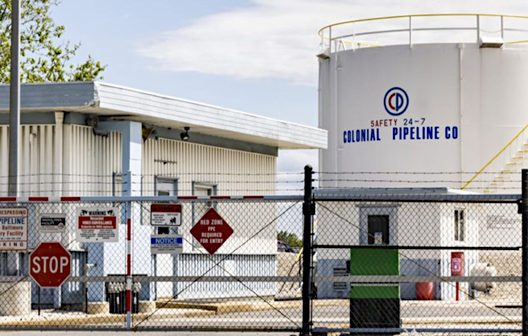

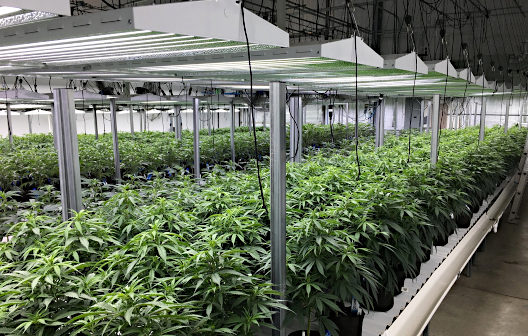





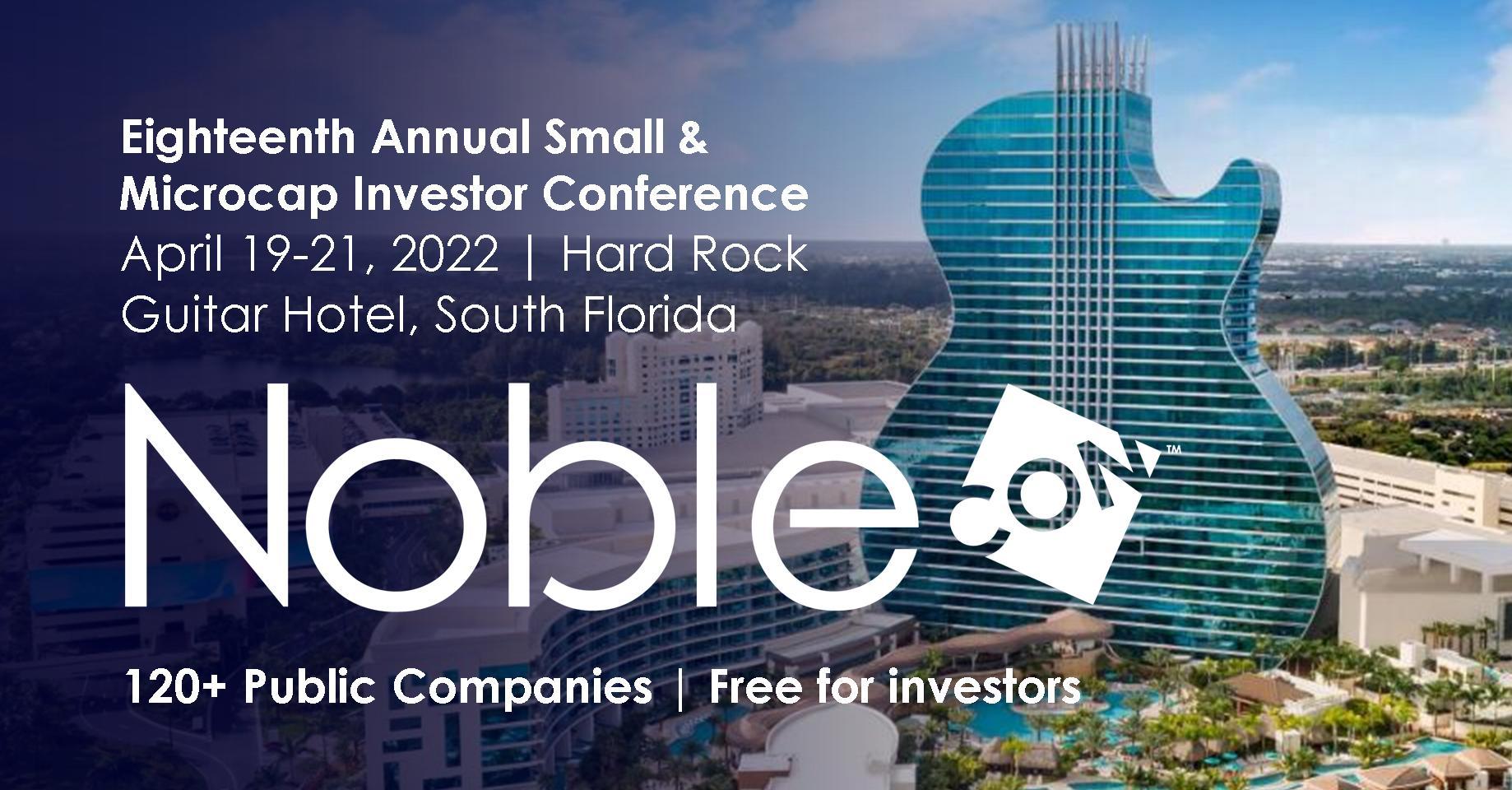














































































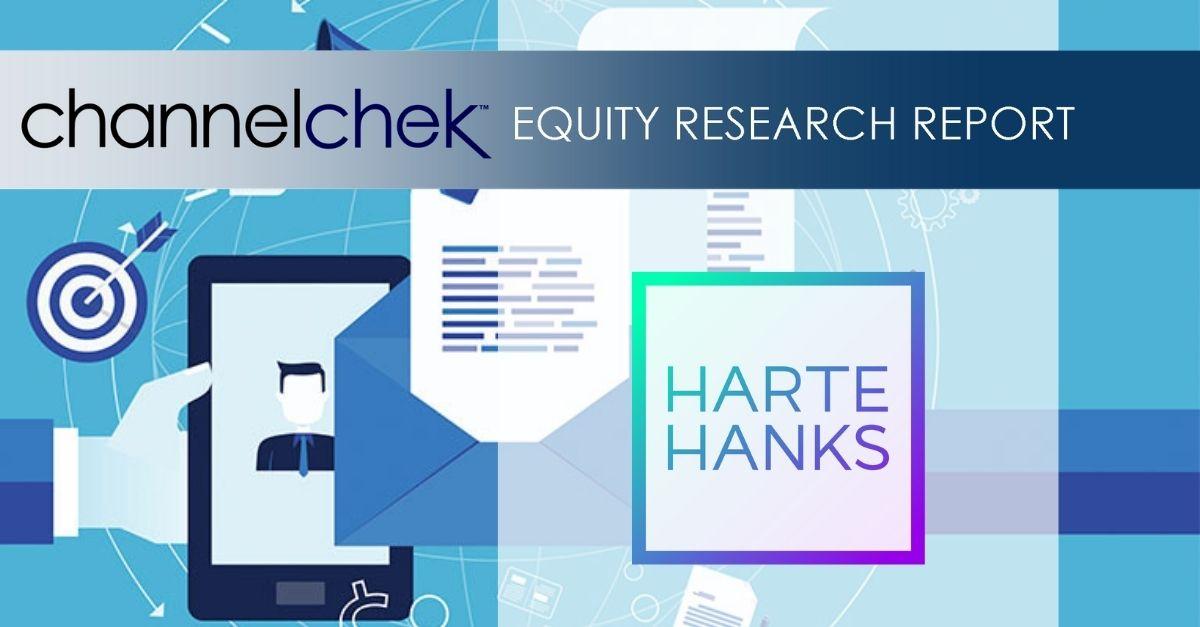


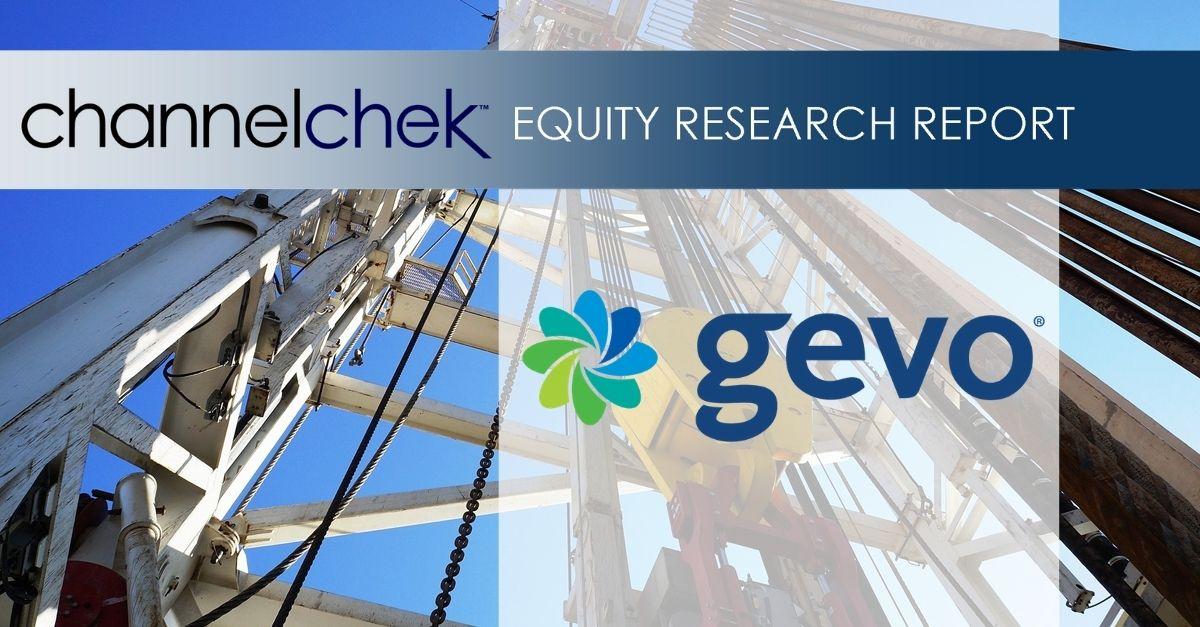


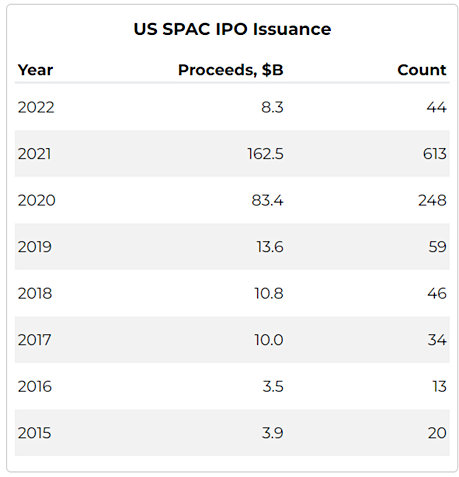 Currently, there are 602 SPACs with 162.4 billion in combined funds looking to find acquisitions. There are SPACs succeeding in finding acquisition targets, tickers like
Currently, there are 602 SPACs with 162.4 billion in combined funds looking to find acquisitions. There are SPACs succeeding in finding acquisition targets, tickers like 